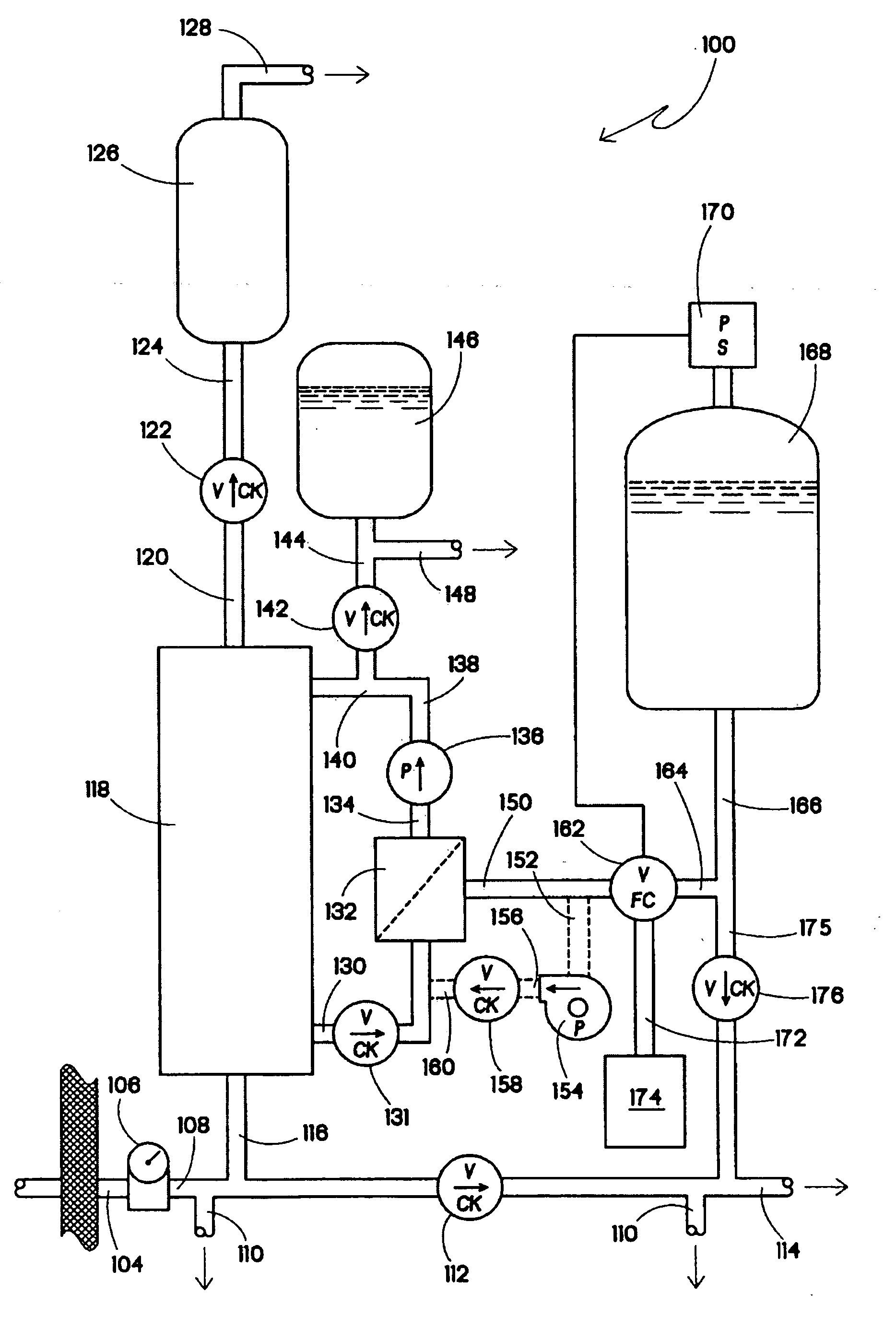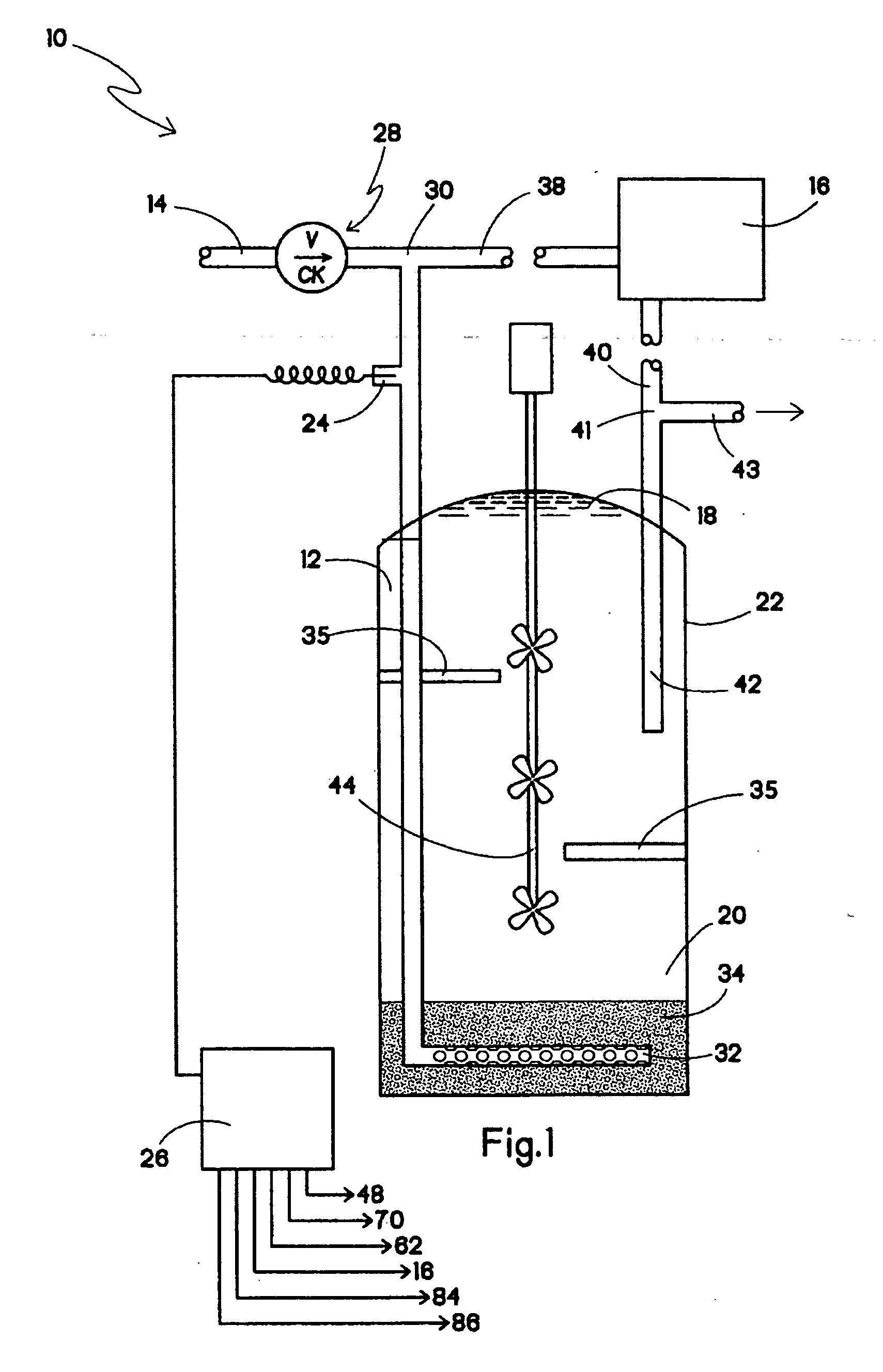Flow-through tank for water treatment
a technology of water treatment and flow-through tanks, which is applied in water/sewage multi-stage treatment, water softening, separation processes, etc., and can solve problems such as high cost, complicated, and potential environmental problems of water softeners, and achieves the effects of reducing the number of water softeners, and increasing the cost of water softeners
- Summary
- Abstract
- Description
- Claims
- Application Information
AI Technical Summary
Benefits of technology
Problems solved by technology
Method used
Image
Examples
Embodiment Construction
[0019] Referring now to FIG. 1, the present fluid or water treatment system, generally designated 10, includes a flow-through tank 12. The present invention, including a treatment apparatus and method of operating same, offers several advantages over the prior art. First, full and constant inlet pressure is always provided at respective points of use (i.e., treated water delivery ports). Second, water is always available at the points of use. Moreover, the present treatment system 10 is smaller and more economical compared to known non-water softener water treatment systems and devices. In addition, the present system 10 can be adapted to include an add-on storage tank for generating higher quality water, and operates with relatively simple controls.
[0020] The present flow-through tank 12 receives raw, untreated or low quality water by a line 14 that is under inlet water pressure, similar to a typical residential hot water heater. Generally, water quality is determined by a the amo...
PUM
| Property | Measurement | Unit |
|---|---|---|
| Pressure | aaaaa | aaaaa |
| Flow rate | aaaaa | aaaaa |
| Distribution | aaaaa | aaaaa |
Abstract
Description
Claims
Application Information
 Login to View More
Login to View More - R&D
- Intellectual Property
- Life Sciences
- Materials
- Tech Scout
- Unparalleled Data Quality
- Higher Quality Content
- 60% Fewer Hallucinations
Browse by: Latest US Patents, China's latest patents, Technical Efficacy Thesaurus, Application Domain, Technology Topic, Popular Technical Reports.
© 2025 PatSnap. All rights reserved.Legal|Privacy policy|Modern Slavery Act Transparency Statement|Sitemap|About US| Contact US: help@patsnap.com



